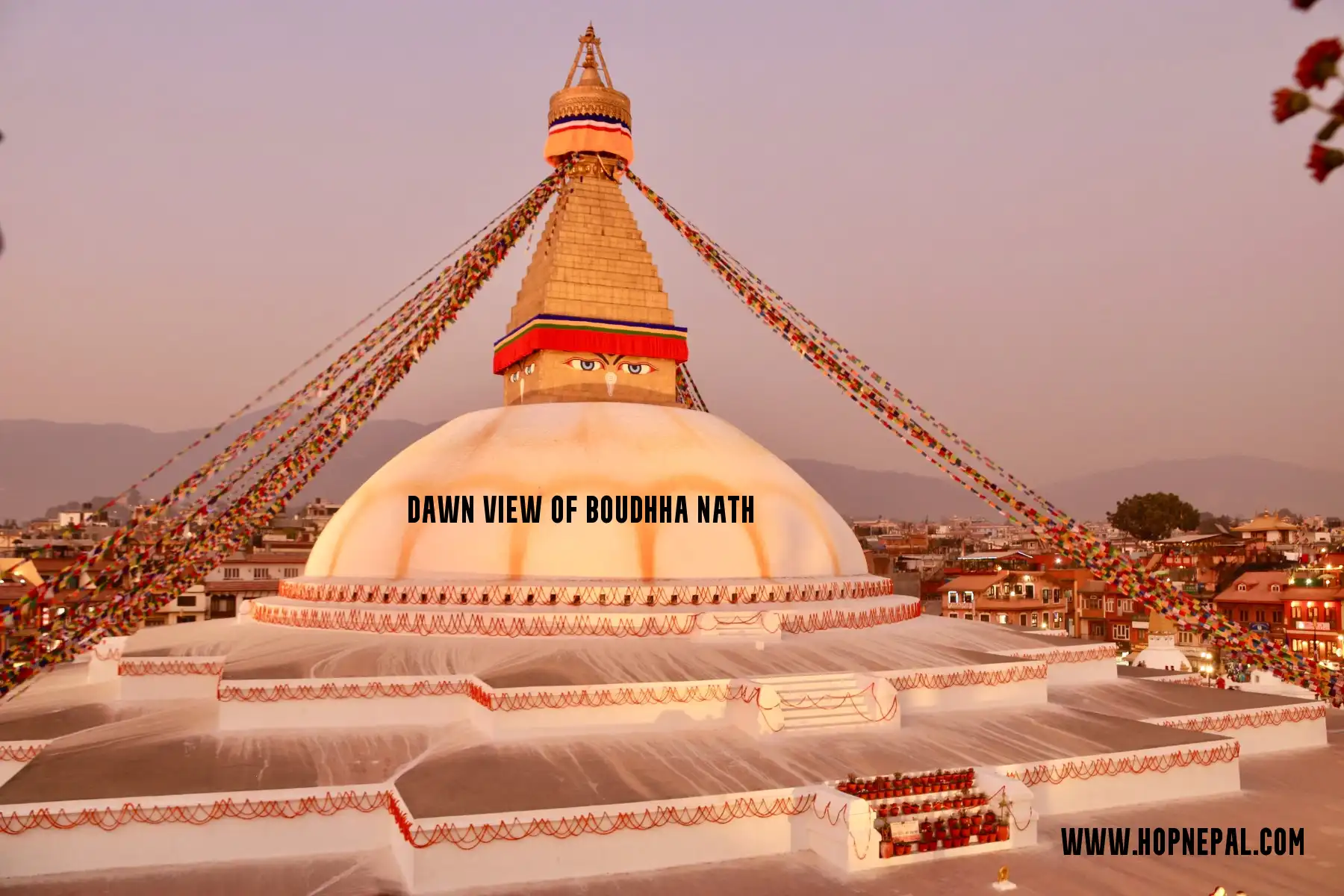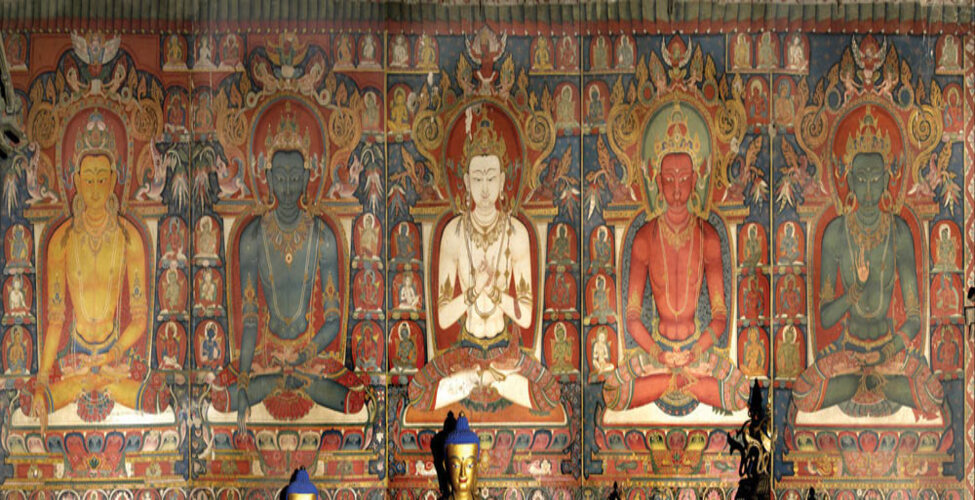The position of Nepalese art and architecture has become an essential aspect of the country's cultural legacy. Architecture is a term used to describe the art of arranging a living space(Bastukala). The ancient architecture of Nepal, like the art of painting and sculpture, is considered exceptional even from a scientific standpoint.
Nepalese architecture is also considered one of the nation's most important cultural heritage arts. Three types of ancient architecture can be identified. Old architecture is awe-inspiring in its mastery of craftsmanship and chiselling techniques. The heritages and architectural structure witness the efforts made through medieval times.

Image Cr: ImNepal
Caption: Stone sculpture in Bhaktapur
Art and architecture in Nepal are essential, as they reflect the ancient history and people's distinct lifestyles. The arts and architecture are cultural and traditional identities of races and groups of people. The architectural values and arts that this region traces can be used to infer human civilization.
Nepal has always been appreciated for its beautiful cultural artefacts, chariot festivals, culture, ethnic groups, religions, and way of life. Nepalese civilization is sometimes associated with Buddhism and Hinduism. The Tibetan plateau and Indian Subcontinent have had a significant impact on Nepalese culture, which has led to the development of art and architecture. Most people practise the Hindu faith, and Hinduism and Buddhist philosophy have influenced Nepalese rulers from ancient times. The shadow can be seen on Nepalese architectural structures and heritage monuments. The Hindu art of deities, Thangka paintings, temple architectural style, and chaityas exemplify Nepalese customs and culture.
Because Nepal was once a Hindu country and currently has many Hindus and Buddhists, Muslim and Christian-influenced architecture are uncommon. And since Nepal has never been ruled by either a Muslim or a Christian king, which could explain the Hindu and Buddhist influences in Nepalese art and architecture.
The Pagoda Style
The Pagoda style was first introduced to Nepal in the early 13th century, according to historical records. Araniko and his Nepalese colleagues are thought to have brought the pagoda style of Nepalese architecture to China.
Pagoda style refers to a structure with many roofs, each with a broader base and gradually narrowing tops—Changu Narayan temple. Mna GRiha of Man Dev, Narendra Dev's Bhadra Diwas, and Amshuverma's Kailashkut Bhawan are examples of Nepalese culture's Pagoda style.

Night view of Pagoda-style temple
During the Malla period, many Pagoda-styled temples, structures, and palaces were constructed. Pagoda style in Nepal is represented by Kathmandu's Kasthamandap, Bhaktapur's Dattatraya and Nyatapole, and many others. Nuwakot's palace, and Basantapur's nine-storeyed palace, both built during the reign of King Prithivi Narayan Shah, are examples of this architecture. Pagodas can also be seen in Taleju, Pashupatinath, and Palanchowk Bhagwati temples.
The Stupa or Chaitya Style
The Stupa or Chaitya form, according to Boudha tradition, is a style of architecture with a large base that progressively tempers upwards. This architectural style is thought to have been introduced to Nepal by Emperor Ashoka. Lumbini's Maya Devi temple is an excellent example.
Since ancient times, this style has been popular in Nepal. The Stupa Style is well-represented in Swayambhunath and Boudhanath. Patan's Ashok Stupa is thought to be Nepal's oldest stupa. This style is also used in Chawahil's Charumati Chaitya.
 Dawn view of Boudhha Nath
Dawn view of Boudhha Nath
The Shikhar Style
Shikhar architecture is also a lovely example of traditional design. It's towering and looks like a pyramid. The outside of such structures is divided into five to nine perpendicular parts. Gajurs are at the top of each segment. They are more comprehensive in the lower half and narrower in the upper half.

Exquisite Shikar-Style Interior Design
Mahaboudha and Patan's Krishna Mandir are also good examples. Siddhinarsingh Malla, the famous Malla ruler, constructed the Krishna Mandir. Gumba, Mugal, and other architectural styles build houses and religious sites in Nepal. This is demonstrated by the Janaki Mandir at Janakpur. The Terai, in particular, is home to numerous stunning Gumba Style structures.
The Malla period palace in Bhaktapur, Kesar Mahal, Thapathali Durbar, Rana era palace of Singha Durbar, Sri Mahal, Rani Mahal, and other magnificent examples of Nepalese architecture is well worth seeing. In these palaces, we can see some European-style architecture.
Nepal's Modern Architectural Development
The modern architecture of Nepal is a beautiful example of old architecture. During the rule of the Kirats and Licchavis, Nepalese architecture transformed. Classic Nepalese architecture bore on a new shape during the Malla period, with significant changes and fresh understandings.
The Malla sovereigns reconstructed and transformed old architectural styles, and the Malla period is notable for its modern architectural revolutions. Artefacts from the Malla period are still famous and can be found in some Nepalese establishments.
Nepali architecture began to take on a more modern appearance during the Rana dynasty. The Neoclassical style was adopted in Nepal during the reign of the Ranas. Garden of Dreams is an excellent specimen of Neoclassical architecture in Thamel's downtown district. The western style, influenced by Greek and Roman architecture, was popular under the Rana and Shah dynasties.
The impact of Roman and Greek architectural styles may be seen in Nepal's present Durbars and Royal Palaces. The practice of making architectural improvements throughout the reigns of the Rana and Shah emperors is Nepal's first move toward modern architecture.
 Image Cr: Wonders of Nepal
Image Cr: Wonders of Nepal
Caption: Narayanhiti Palace Museum in Kathmandu
Later, architectural development and professional architecture trends were established to construct one-of-a-kind buildings, palaces, and royal residences. It has altered with the evolving foreign and local architects in terms of design, functions, arrangement, and material employed.
Narayanhiti Royal Palace, Sahid Gate, Soaltee hotel, Hotel Yak and Yeti, Amrit Science Campus, Nepal Art Council, Pangre Ghar in Pulchowk, Rabibhawan, and others are stunning examples of contemporary architecture in Nepal.
The general housing blocks and building construction style are popular with contemporary adjustments with much Western influence. However, Nepal's old architecture stimulates the development of the people's arts and culture in various parts of the country.
Modern development is influenced by European style, although historic style hotels and houses are becoming more popular. The government of Nepal is also supportive of heritage conservation and preservation and is attempting to restore heritages in the same style as before while sustainably protecting monuments.















